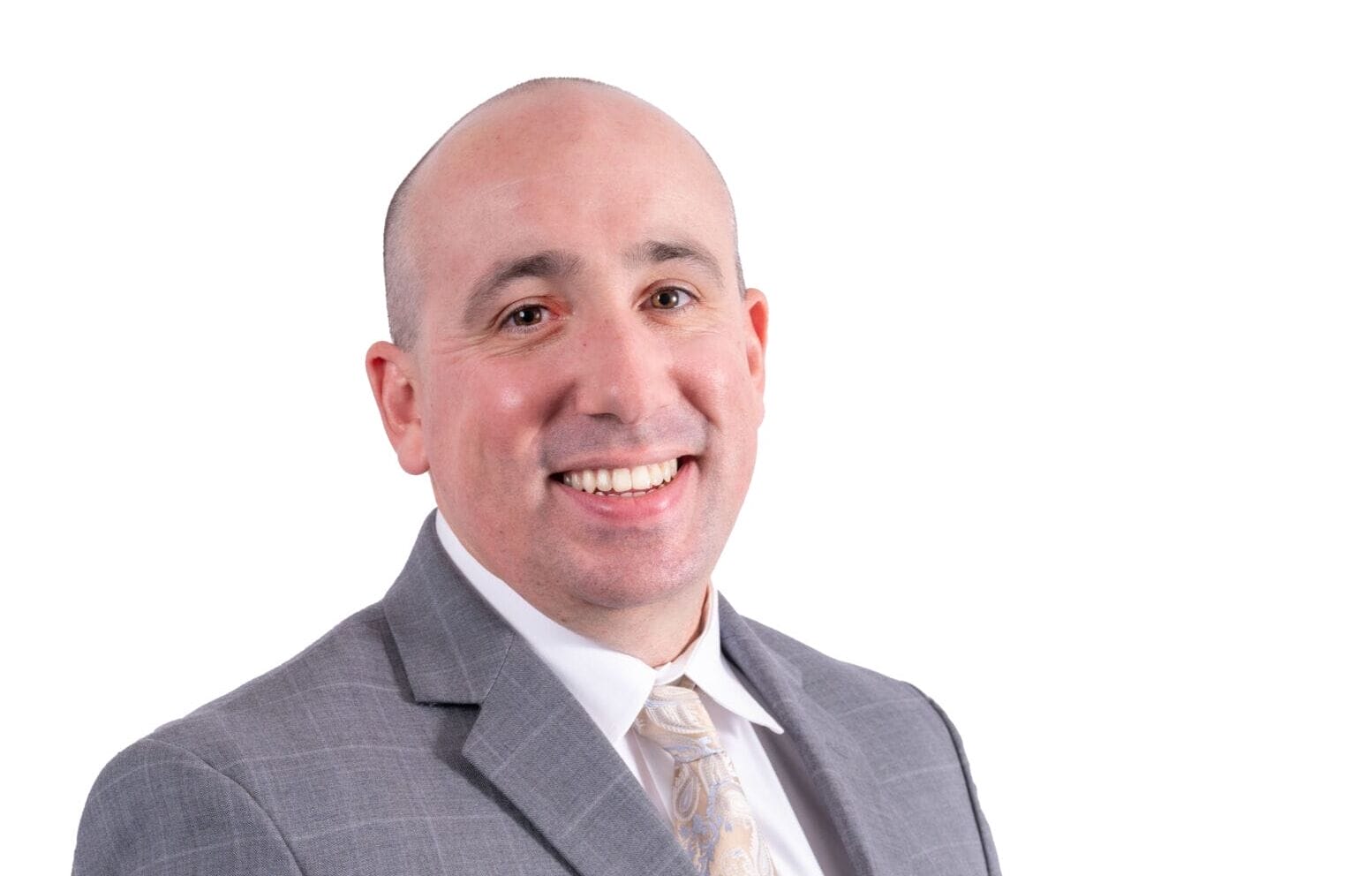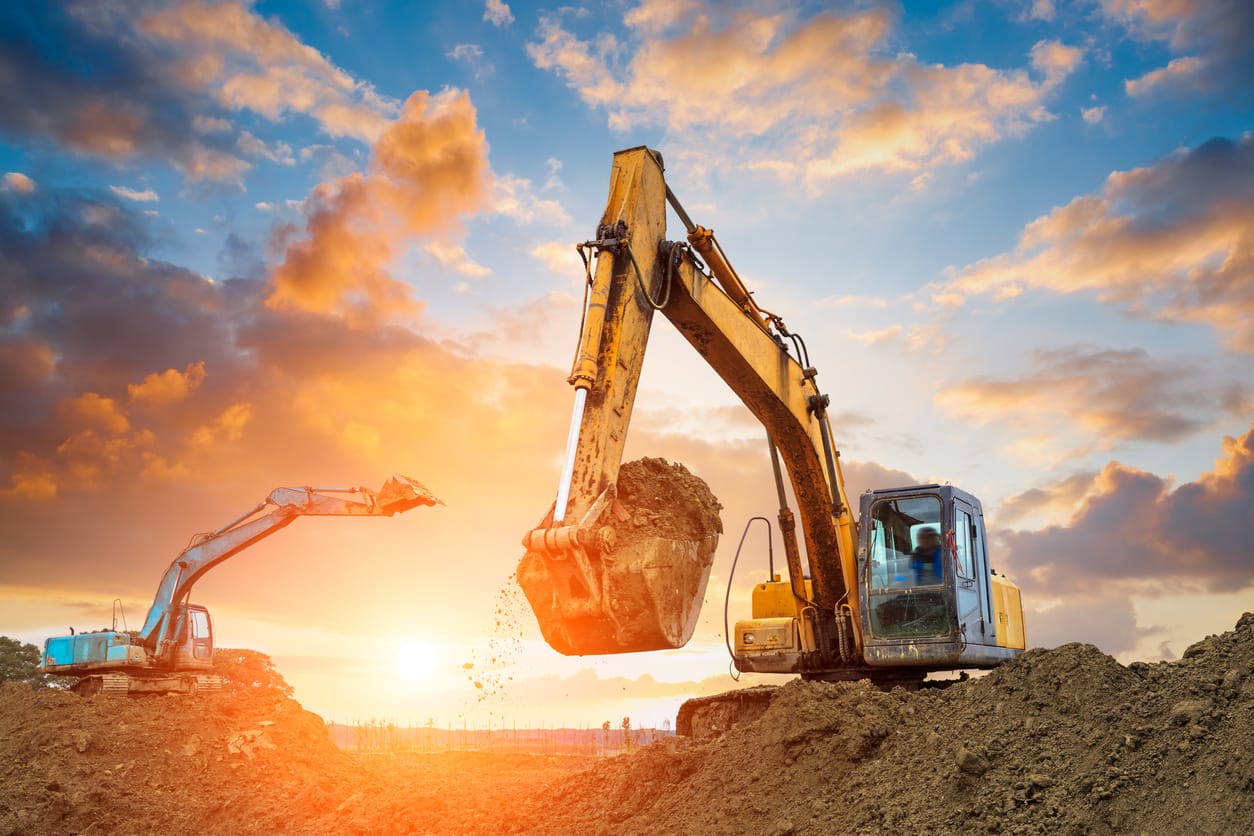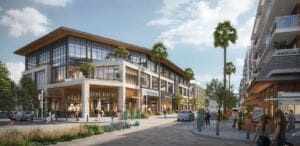Construction is a team sport — it takes the concerted efforts of developers, architects, engineers, general contractors and municipalities to bring a project from concept to completion. That’s why Clark Princell, president and CEO of Valley Partnership, places a high premium on relationships.
“I am passionate about being incredible partners with the business and development community. This isn’t something we can do alone,” he says. “We need to come together and make sure that we continue with the thoughtful approach we’ve had post-recession and not rest on the successes we’ve had.”
READ MORE: TSMC plans third fab in Phoenix, increases investment to $65 billion
AZRE magazine sat down with Princell to talk more about the Valley Partnership’s place in Greater Phoenix’s development industry, the organization’s top priorities, what challenges are ahead and how the region can continue to grow responsibly.
The following responses have been edited for clarity and length.

AZRE: What role do you see Valley Partnership playing in Greater Phoenix’s development community?
Clark Princell: A lot of that harkens back to how the organization was started 35 years ago, when a group of developers came together to create an organization that could represent all of development and be centered around this idea of responsible development.
Some of the factors that make us unique is that we represent all development including homebuilders, commercial, industrial and multifamily. We also have a very close-knit relationship with our public partners. We have members from Maricopa County and the City of Phoenix on our board of directors, which creates an environment where we’re constantly trying to find the way forward to allow growth to continue but understanding that growth can only continue with strong partnerships with our public partners.
AZRE: What differentiates Valley Partnership from the other development associations in Greater Phoenix?
CP: We all work together — a lot of our members are also members of those other organizations. But by also choosing to be a part of Valley Partnership, they’re buying into the ethos around responsible development and focusing on how we can build catalytic projects that will stand the test of time and benefit the entire region. Not that other organizations don’t want that too, but it’s a top priority for us.
AZRE: You’ve mentioned responsible development a few times here. What does that mean to you?
CP: It’s an acknowledgement that we want to build products we can be proud of and will create value for decades. That’s done in concert with our stakeholders in the community so we can help drive the direction that a certain municipality or area of town wants to go in or create that landmark in a market that others want to build around, like CityScape in Downtown Phoenix.
AZRE: What are Valley Partnership’s top priorities right now?
CP: They all stem off of how we can create an environment that allows this responsible development to occur. The word that comes to mind when I say that is “certainty.” How can we work with our public partners to create the certainty that’s required to continue to attract investment and growth?
That includes things like ensuring we have a water future we can depend on. How can we continue to attract the industries we’ve been so successful in attracting over the last two decades? How do we work with and support our education partners in creating the workforce required for those businesses? It’s all about creating an ecosystem that provides certainty.
AZRE: Can you talk more about creating certainty within the Greater Phoenix market?
CP: What we want is there to be a predictable cost of goods and development. There also needs to be certainty around having individuals in the rulemaking political class who are ready to roll up their sleeves, examine what issues are coming down the pike and then use data driven actions to address those issues, whether it be heat, water or climate change.
AZRE: Water availability is something that has attracted negative national attention recently. What needs to happen to reinforce certainty regarding water?
CP: We have an extremely long legacy of being both thoughtful about how we utilize water in the region and planning for the future. But we need to continue to be thoughtful and work together not only as a metro region, but as a state to find thoughtful ways to both plan for our water future and allocate resources to make smart investments in both conservation and augmentation. We can’t — and we won’t — rest on our laurels.
AZRE: Since the pandemic, the cost of living has increased sharply in the Valley, with housing becoming more difficult to attain, even though home and rent prices have fallen from their highs. What can be done to help with affordability?
CP: One of our economic development tools has always been our affordability compared to others. While prices have gone up, it’s still in our toolbox, but it’s something that we need to be conscious of.
Supply chains are still an issue for certain components. It seems like labor costs are starting to level out, but we are constantly working with workforce partners at both cities and the community colleges to encourage more folks to go into the trades. I’m also hoping that [Federal Reserve] Chairman Powell sees it fair to lower interest rates as we move through the rest of the year.
Some cities are also rethinking how they’re using certain properties, whether that’s encouraging more density on residential projects or, in a post-COVID world, taking commercial properties that were once thriving and rethinking what the best utilization for those are.
AZRE: Can anything be done at the municipalities to help with affordability?
CP: We need to continue to work with our public partners on timeframes — how we can get plans developed and inspections and permitting done more quickly? We should push the envelope and figure out how to best utilize technology to speed these processes along. Also, we need to work with them on properly zoning land as best we can, whether that’s done through the general plan or through rezoning.
Our city colleagues have been hit with workforce issues, just like we have. We need to work hard to encourage more graduates or folks looking for a second career to go into the plan review and inspection jobs that exist.
AZRE: Anything else you’d like to leave readers with?
CP: I’d add that we should ensure that as many folks as possible can enjoy the benefits of the Valley’s growth. Where we can run into problems, and frankly nativistic pushback, is if we create an environment where people don’t feel like they have opportunities to get jobs at TSMC, Intel or the other businesses choosing to locate here.
Part of it requires telling the story of why growth is important — how these new revenues help pay for parks, freeways and infrastructure throughout the region. But we also need to engage with our workforce partners to create those opportunities for when people want to access those jobs, so companies aren’t just hiring college graduates from California, Seattle or Chicago. There needs to be a pathway to success through both our universities and the community college system.




